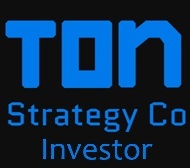Yes, these questions are very relevant since we we
Post# of 106
At a broad level that can be other SaaS stocks. Narrow it down a little more it can be similar size companies and maturity levels. Focusing down even more it can be companies in the same business.
SasS revenue can be a component if digital revenue, but what most analysts are interested in is SaaS revenue as that tends to be the gift that keeps on giving. Also remember that SaaS revenue can't be recognized until each month passes so it also tend to be the gift you know you are getting a year in advance in many cases which is just the opposite of many other companies that sell products (cars, airplanes, hamburgers, etc.)
To answer your question. SaaS revenue is money from Subscriptions fees. Digital revenue can be for other non subscription services like setup fees, integration, etc. which generally can be one-time fees but not always
Many SaaS companies will have ups/downs if you look at performance with a narrow lens which is why looking at year over year might give you a better perspective as it can adjust for seasonality and other factors.
You also may want to look at, has a company made a significant change to their product offering. If you are wondering why that matters, most potential customers will delay their purchase until the 'new version' comes out. I've posted previous examples like Day Software who's sales sunk big time while they were in transition and then exploded one complete. Then Adobe purchase them.
Also keep in mind the pandemic effect. Some industries it helped, others were severely impacted with a number of companies going out of business.
A lot of numbers get thrown around within a quarterly/annual PR, so which one matters.
To me: SaaS Recurring Revenue Year Over Year
With the company you mentioned, it would not surprise me at all of they double again, triple, quadruple, etc. but that is up to them to make it happen. There are plenty of examples where companies do just that. Multiple revenue gain will dictated the valuation but also other growth factors like number of customers, users, downloads, etc.
Before anyone thinks they would have to wait another year for the annuals with any stock to see success, that isn't the case. Any hint of revenue success or user growth will move the needle in days, weeks or months.
BTW, Signing a $1M deal when your SaaS revenues are $5.1M. Yeah I think those types of things will move the needle. That is a 20% increase with just one customer. Just need another $4M to double their revenue.
One thing I didn't mention is - size matters
If you are selling ice cream bars at a buck a pop, you have to sell a hell of a lot of them just to pay for the gas and loan on your ice cream truck.
$1M a pop, is a lot easier and the potential size of deals is something analyst really look at. For more mature companies the size of deals is even broken down in their filing. Meaning how many large deals do they have.
Back to comps
Take a look at Bambuser that I previously posted about.
What is their market cap
What is their revenue
What is their forecasted revenue growth
Remember what Deanotn shared:
"The World Economic Forum defines hypergrowth as the phase of startup expansion, where a company is maintaining an average annual growth rate of at least 40% for more than one year."
What was Bambuser and Verb's annual SaaS growth last year?
What does it need to be this year?
 (14)
(14) (0)
(0)